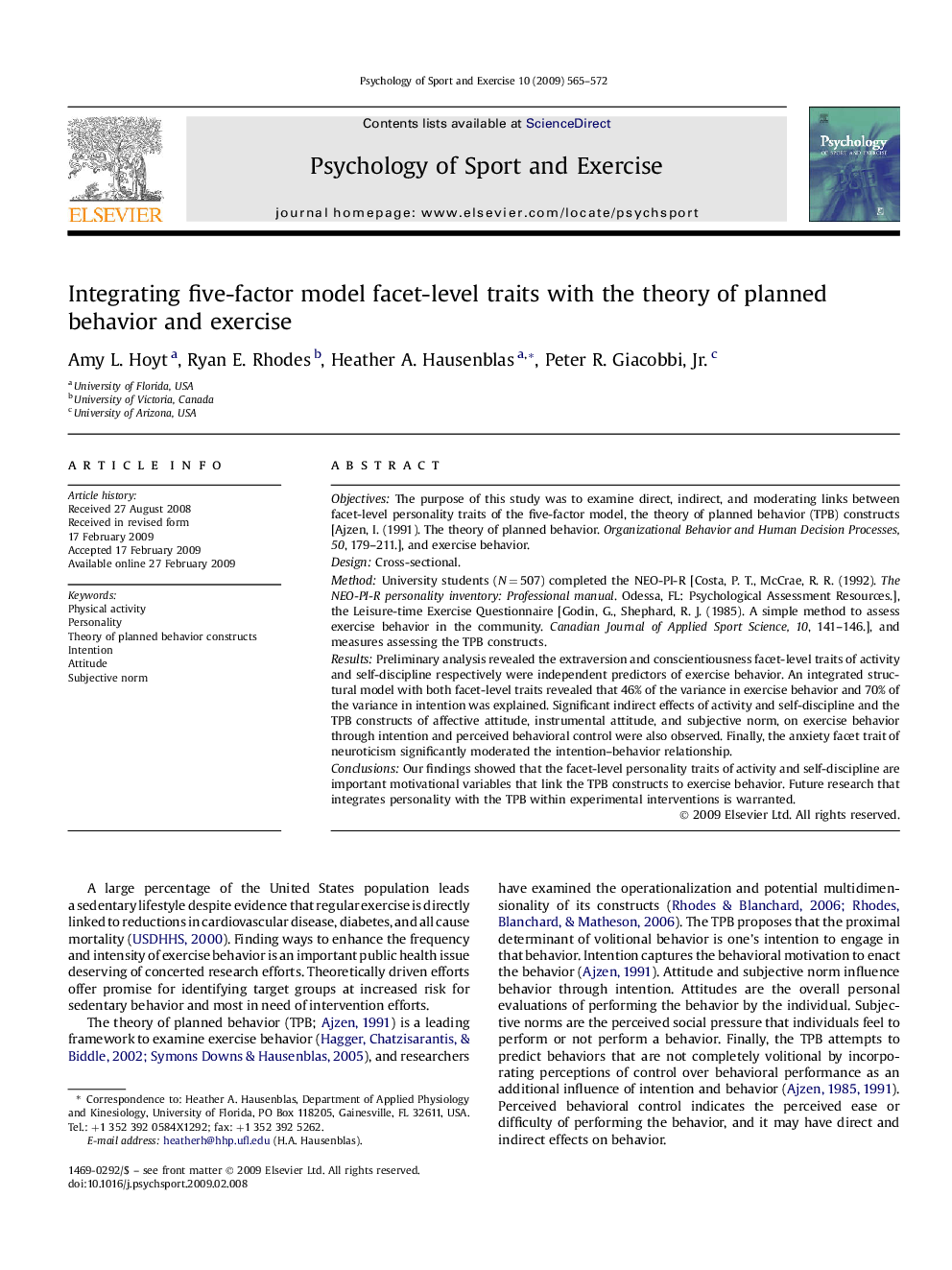| کد مقاله | کد نشریه | سال انتشار | مقاله انگلیسی | نسخه تمام متن |
|---|---|---|---|---|
| 894807 | 1472145 | 2009 | 8 صفحه PDF | دانلود رایگان |

ObjectivesThe purpose of this study was to examine direct, indirect, and moderating links between facet-level personality traits of the five-factor model, the theory of planned behavior (TPB) constructs [Ajzen, I. (1991). The theory of planned behavior. Organizational Behavior and Human Decision Processes, 50, 179–211.], and exercise behavior.DesignCross-sectional.MethodUniversity students (N = 507) completed the NEO-PI-R [Costa, P. T., McCrae, R. R. (1992). The NEO-PI-R personality inventory: Professional manual. Odessa, FL: Psychological Assessment Resources.], the Leisure-time Exercise Questionnaire [Godin, G., Shephard, R. J. (1985). A simple method to assess exercise behavior in the community. Canadian Journal of Applied Sport Science, 10, 141–146.], and measures assessing the TPB constructs.ResultsPreliminary analysis revealed the extraversion and conscientiousness facet-level traits of activity and self-discipline respectively were independent predictors of exercise behavior. An integrated structural model with both facet-level traits revealed that 46% of the variance in exercise behavior and 70% of the variance in intention was explained. Significant indirect effects of activity and self-discipline and the TPB constructs of affective attitude, instrumental attitude, and subjective norm, on exercise behavior through intention and perceived behavioral control were also observed. Finally, the anxiety facet trait of neuroticism significantly moderated the intention–behavior relationship.ConclusionsOur findings showed that the facet-level personality traits of activity and self-discipline are important motivational variables that link the TPB constructs to exercise behavior. Future research that integrates personality with the TPB within experimental interventions is warranted.
Journal: Psychology of Sport and Exercise - Volume 10, Issue 5, September 2009, Pages 565–572